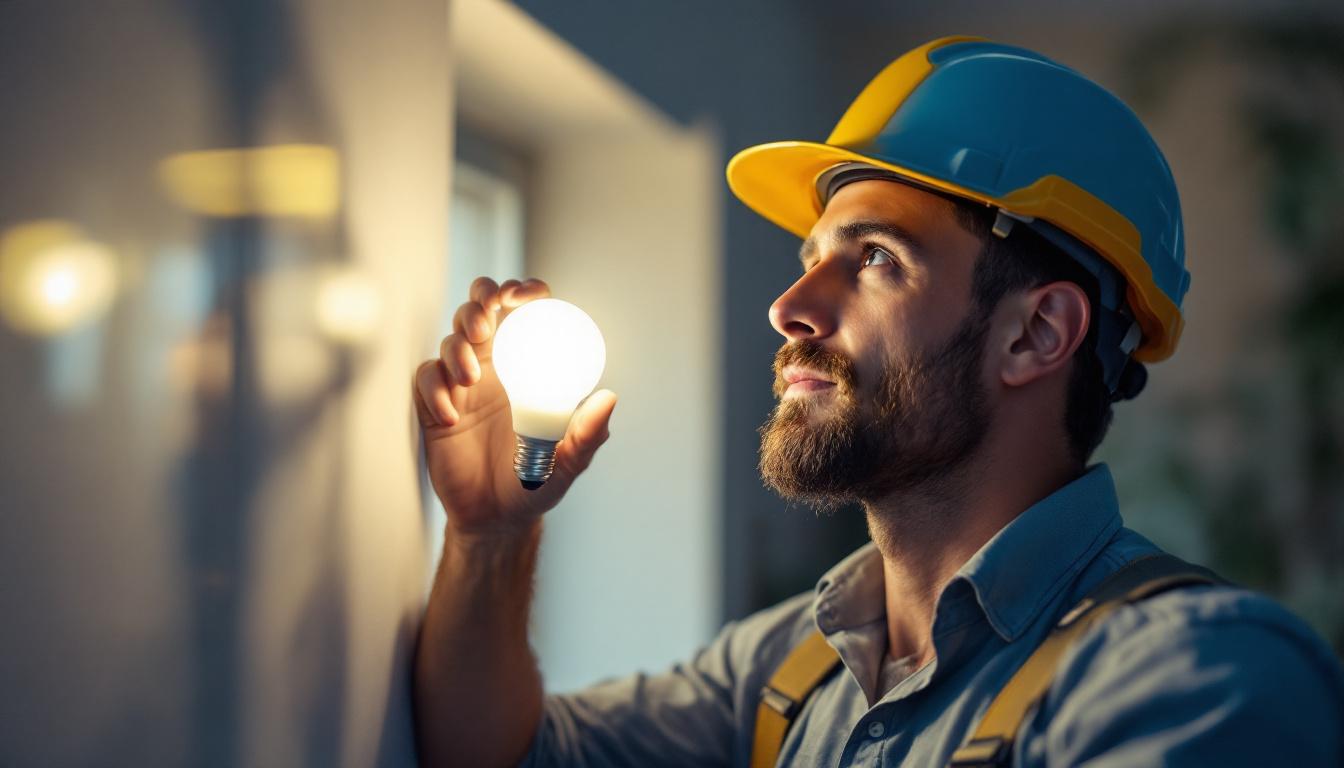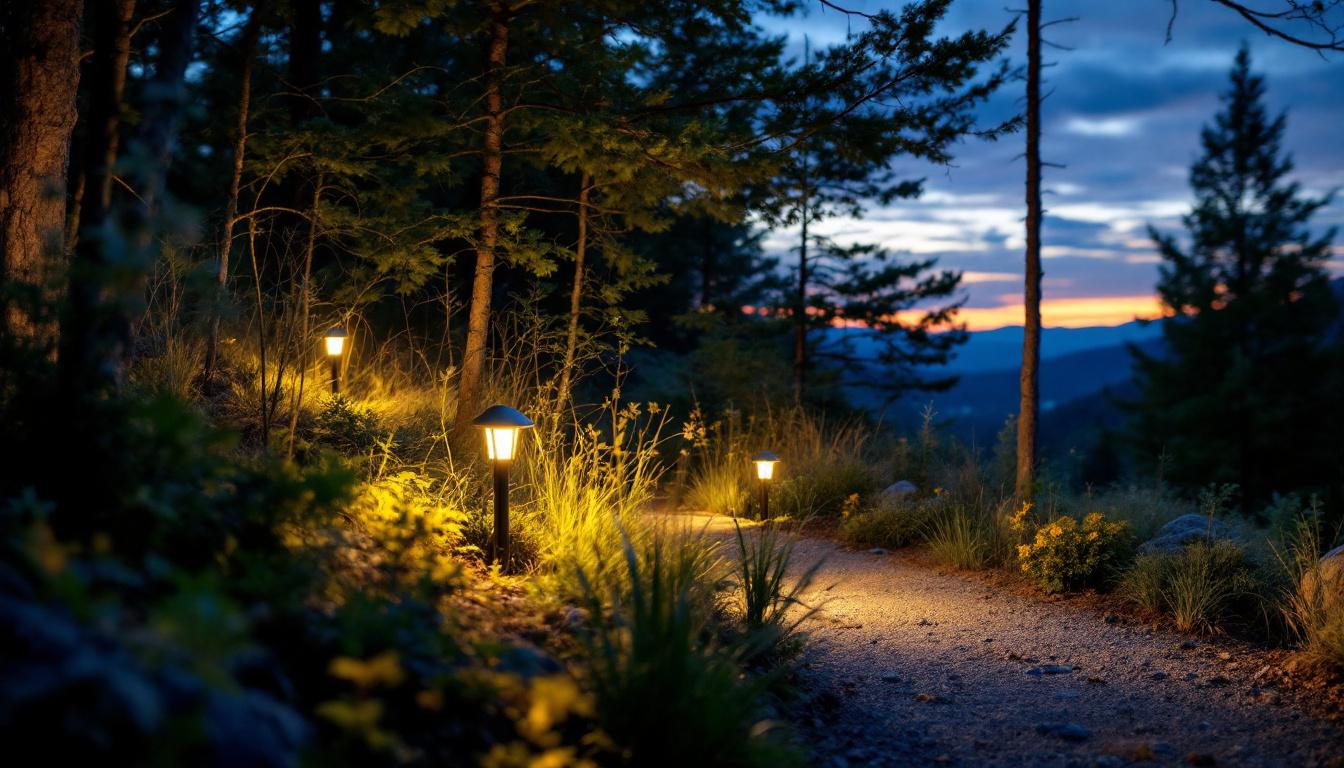
As the demand for energy-efficient lighting continues to grow, lighting contractors must stay informed about the latest advancements in LED technology. One of the most significant developments in this field is the emergence of the brightest LED light bulbs. This article provides expert advice for lighting contractors on selecting, installing, and utilizing these powerful lighting solutions effectively.
LED (Light Emitting Diode) technology has revolutionized the lighting industry. Unlike traditional incandescent or fluorescent bulbs, LEDs use a semiconductor to convert electricity into light. This process is not only more energy-efficient but also results in a longer lifespan for the bulbs. In fact, many LED bulbs can last up to 25,000 hours or more, significantly outpacing the typical lifespan of incandescent bulbs, which is around 1,000 hours. This longevity reduces the frequency of replacements, leading to lower maintenance costs and less waste, making LEDs an environmentally friendly choice.
When it comes to brightness, LEDs are measured in lumens rather than watts. This shift in measurement can be confusing for contractors accustomed to traditional lighting methods. Understanding the lumen output is crucial for selecting the right bulb for specific applications. Additionally, the efficiency of LEDs means that they can produce more light per watt consumed compared to their incandescent counterparts, further emphasizing the importance of lumens as a metric. This understanding helps contractors not only to meet client expectations but also to optimize energy usage in various projects.
The brightness of LED bulbs can vary significantly. For example, a standard 60-watt incandescent bulb typically produces around 800 lumens, while a high-quality LED bulb can achieve the same brightness with only 10-15 watts of power. This efficiency not only reduces energy costs but also minimizes heat output, making LEDs a safer choice for various environments. Furthermore, the reduced heat generation means that LEDs can be used in fixtures that may be sensitive to heat, such as enclosed spaces or decorative lighting, without the risk of damage or fire hazards.
Contractors should consider the lumen output when recommending LED options to clients. Higher lumen ratings are ideal for spaces requiring bright, focused light, such as workshops or retail environments, while lower lumen ratings may suffice for residential applications. It’s also worth noting that the dimmability of LED bulbs varies by model, which can enhance their versatility. Dimmable LEDs allow for adjustable brightness levels, catering to different moods and activities within a space, from bright task lighting to soft ambient lighting for relaxation.
Color temperature, measured in Kelvin (K), is another critical factor in LED selection. Warm white light (2700K-3000K) is often preferred for residential settings, while cooler temperatures (4000K-5000K) are suitable for commercial spaces. Understanding the desired ambiance of a space can guide contractors in selecting the appropriate color temperature. Additionally, some LEDs offer tunable white technology, allowing users to adjust the color temperature throughout the day, mimicking natural daylight patterns and enhancing well-being in both homes and workplaces.
Moreover, the quality of light produced by an LED bulb is essential. The Color Rendering Index (CRI) measures how accurately colors appear under artificial light. A higher CRI (90 or above) is preferable in settings where color accuracy is vital, such as art studios or retail environments. In addition to CRI, the spectral distribution of light emitted by LEDs can also affect how colors are perceived. Some manufacturers are now focusing on producing LEDs that offer a more balanced spectrum, which can enhance visual comfort and reduce eye strain, making them an excellent choice for environments where people spend extended periods, such as offices or schools.
Choosing the brightest LED light bulb involves several considerations beyond just brightness and color temperature. Contractors must evaluate the specific needs of their clients and the environments in which the bulbs will be used. This evaluation process can include assessing the existing lighting conditions, the purpose of the space, and even the personal preferences of the clients, ensuring that the final selection meets both functional and aesthetic requirements.
Different applications require different types of lighting. For instance, outdoor lighting may require bulbs that are not only bright but also weather-resistant. In contrast, indoor lighting may focus more on aesthetics and ambiance. Understanding the application helps contractors make informed decisions about which LED bulbs to recommend. For example, in a retail setting, the color rendering index (CRI) becomes crucial, as it impacts how colors appear under the lighting, influencing customer perceptions and purchasing decisions.
Furthermore, the beam angle of the bulb can affect how light is distributed in a space. A narrow beam angle is ideal for spotlighting specific areas, while a wider beam angle is better for general illumination. Contractors should consider the intended use of the space when selecting bulbs. In a home setting, for example, using a combination of narrow and wide beam angles can create layers of light, enhancing the overall atmosphere and functionality of a room. This layered approach can be particularly effective in areas like kitchens and living rooms, where different tasks may require varying levels of brightness and focus.
Energy efficiency is a significant selling point for LED bulbs. Many manufacturers provide Energy Star ratings, which indicate that the product meets strict energy efficiency guidelines set by the Environmental Protection Agency. These ratings can serve as a valuable tool for contractors when advising clients on sustainable lighting solutions. Additionally, the long-term savings on energy bills can be a compelling argument for clients looking to reduce their overall expenses.
Additionally, understanding the life expectancy of LED bulbs is crucial. Many high-quality LEDs can last up to 25,000 hours or more, significantly reducing replacement costs and maintenance efforts. This longevity is an attractive feature for both contractors and clients. Moreover, the reduced frequency of replacements not only saves money but also minimizes waste, aligning with eco-friendly practices that many clients prioritize today. As sustainability becomes a focal point in many industries, the choice of LED lighting can contribute to a greener footprint, making it an even more appealing option for environmentally conscious consumers.
Proper installation is essential to maximize the performance and lifespan of LED bulbs. Contractors should follow best practices to ensure that clients receive the best value from their investment in LED technology.
Before installation, it is vital to check the compatibility of the existing electrical system with the new LED bulbs. Some older systems may not be compatible with LED technology, leading to flickering or reduced performance. In such cases, contractors may need to upgrade the fixtures or use compatible dimmers designed for LEDs.
Moreover, ensuring that the wattage of the LED bulb does not exceed the fixture’s rated capacity is crucial. Overloading a fixture can lead to overheating and potential failure, negating the benefits of energy efficiency.
Although LEDs produce less heat than traditional bulbs, they still generate some heat that must be dissipated effectively. Proper ventilation around the fixtures is essential to prevent overheating, which can shorten the lifespan of the bulbs. Contractors should ensure that fixtures are installed in a manner that allows for adequate airflow.
Additionally, using LED bulbs in enclosed fixtures can lead to heat buildup. In such cases, it is advisable to select bulbs specifically designed for enclosed spaces to ensure optimal performance and longevity.
Regular maintenance and troubleshooting are vital for ensuring the continued performance of LED lighting systems. Contractors should educate clients on the best practices for maintaining their LED installations.
Dust and debris can accumulate on LED fixtures, reducing their brightness and efficiency. Regular cleaning with a soft, dry cloth can help maintain optimal performance. Contractors should advise clients on the appropriate cleaning methods to avoid damaging the bulbs or fixtures.
In addition to cleaning, it is essential to periodically check for any signs of flickering or dimming. These issues may indicate a problem with the bulb or the electrical system. Contractors should be prepared to troubleshoot these issues and provide solutions as needed.
While LED bulbs have a long lifespan, they will eventually need to be replaced. Contractors should keep track of the installation dates and remind clients when it may be time for a replacement. Offering upgrade options can also enhance the lighting experience for clients, as newer LED technology continues to improve in efficiency and brightness.
Furthermore, contractors should stay informed about advancements in LED technology. New products may offer better performance, energy savings, or features that can benefit clients. Keeping up with industry trends can enhance the contractor’s reputation as a knowledgeable professional in the field.
As the lighting industry continues to evolve, the brightest LED light bulbs represent a significant advancement in energy-efficient lighting solutions. By understanding LED technology, selecting the right bulbs, ensuring proper installation, and providing ongoing maintenance, lighting contractors can offer exceptional value to their clients.
Staying informed about the latest developments in LED technology and best practices will not only enhance the contractor’s expertise but also contribute to the overall satisfaction of clients. Embracing these advancements will position contractors as leaders in the lighting industry, ready to meet the growing demand for efficient and effective lighting solutions.
Ready to elevate your lighting game with the brightest LED bulbs on the market? Look no further than LumenWholesale, where we provide lighting contractors with the highest quality, spec-grade lighting products at unbeatable wholesale prices. Say goodbye to local distributor markups and hello to superior lighting solutions that meet the highest industry standards. With our hassle-free bulk buying and free shipping, you can ensure your projects shine bright while enjoying the best value. Don’t compromise on quality or price. Discover wholesale lighting at the best value today and light up your clients’ spaces with confidence and convenience.

Discover the key differences between 6 Vs 4 can lights and learn crucial insights for lighting contractors.

Discover how affordable outdoor ceiling fans can give lighting contractors a competitive advantage.

Discover the critical role of trail lighting in enhancing safety and aesthetics for outdoor spaces.

Discover essential tips and techniques for lighting contractors to master the art of fluorescent lighting.